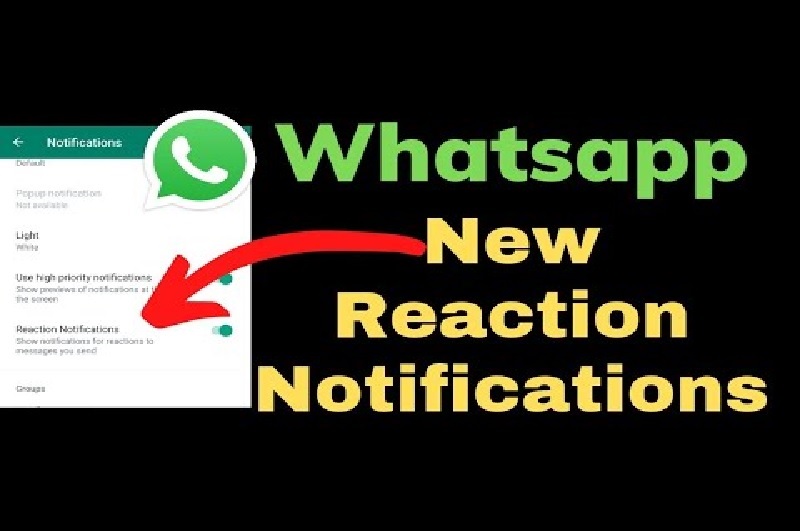How to Disable WhatsApp Reaction Notifications?
24th May 2023, Kathmandu
WhatsApp is a popular messaging application that allows users to send text messages, make voice and video calls, share media files, and engage in group chats. It was founded in 2009 by Jan Koum and Brian Acton and later acquired by Facebook in 2014. WhatsApp is available for smartphones and can be downloaded for free from app stores.
The app utilizes an internet connection, either through mobile data or Wi-Fi, to enable communication between users. It operates on various mobile platforms, including iOS (iPhone), Android, and Windows Phone. WhatsApp has gained widespread popularity due to its ease of use, cross-platform compatibility, and wide range of features.
Here are some key features of WhatsApp:
Messaging: WhatsApp allows users to send text messages to individuals or groups. It supports multimedia messages, such as photos, videos, and voice messages, making conversations more engaging.
Voice and Video Calls: Users can make free voice and video calls to their contacts using WhatsApp. This feature has become particularly popular as an alternative to traditional phone calls, especially for international communication.
Group Chats: WhatsApp enables users to create and participate in group chats. This feature is useful for communicating with multiple people simultaneously, sharing information, and planning events.
End-to-End Encryption: WhatsApp incorporates end-to-end encryption, which ensures that messages and calls are secured and can only be accessed by the intended recipients. This feature enhances privacy and security.
Status Updates: Similar to social media platforms, WhatsApp allows users to post status updates that can be visible to their contacts. Status updates can consist of text, photos, or videos and are visible for a limited duration.
WhatsApp Web: WhatsApp offers a web-based version called WhatsApp Web, which allows users to access their WhatsApp account on a computer. It syncs conversations between the smartphone and the web browser for seamless communication.
WhatsApp Business: WhatsApp also provides a separate application called WhatsApp Business, designed for small businesses to connect with their customers. It offers features like business profiles, automated messages, and customer support tools.
WhatsApp Payments: In certain countries, WhatsApp has integrated a payment feature that allows users to send and receive money securely within the app. This feature facilitates peer-to-peer transactions and payments to businesses.
WhatsApp reaction notifications can be a useful feature for many users, allowing them to quickly acknowledge and respond to messages. However, some people may find these notifications distracting or unnecessary.
How to Disable WhatsApp Reaction Notifications
Open WhatsApp: Launch the WhatsApp application on your smartphone. Ensure that you have the latest version of WhatsApp installed, as older versions may have slightly different settings.
Access Settings: Once you’re inside the app, locate the settings menu. On most smartphones, you can find it by tapping on the three vertical dots in the top-right corner of the screen. Alternatively, some devices have a dedicated settings icon at the bottom of the screen.
Navigate to Notifications: In the settings menu, look for the “Notifications” option. It is usually located under the “Chats” or “Messages” section, but the exact placement may vary depending on your device and operating system.
Customize Notification Settings: Once you’re in the notifications menu, you will see various options to customize your WhatsApp notifications. Look for the option related to reactions or message acknowledgments. It might be labeled differently depending on your device and WhatsApp version. Common labels include “Reactions,” “Message Acknowledgments,” or “Message Replies.”
Disable Reaction Notifications: Tap on the reaction notification option to access its settings. You will typically find a toggle switch or checkboxes to enable or disable the notifications. Disable the toggle or uncheck the box related to reaction notifications.
Confirm Changes: After disabling the reaction notifications, navigate back to the previous menu or exit the settings entirely. Make sure to save your changes if prompted. The specific steps for saving changes may differ based on your device.
Test the Settings: To ensure that the reaction notifications are disabled, ask a friend or family member to send you a message and react to it using a reaction emoji. If you receive no notification or see any visual indication, it means that you have successfully disabled the reaction notifications.
Repeat for Different Devices: If you use WhatsApp on multiple devices, such as a smartphone and a tablet, you might need to repeat the above steps on each device individually. The settings are usually device-specific and not synchronized across all platforms.
Additional Considerations: Depending on your device and WhatsApp version, you may have the option to customize other notification settings as well. For instance, you can choose to disable the message preview or change the notification sound. Take a moment to explore the options and customize them to your liking.
Stay Updated: WhatsApp regularly releases updates that may introduce new features or alter the settings menu. It’s a good practice to keep your app up to date to ensure you have access to the latest settings and features.
By following these steps, you can disable WhatsApp reaction notifications and have a more streamlined messaging experience. Remember, if you ever wish to re-enable these notifications, you can simply revisit the settings menu and enable the corresponding option.







